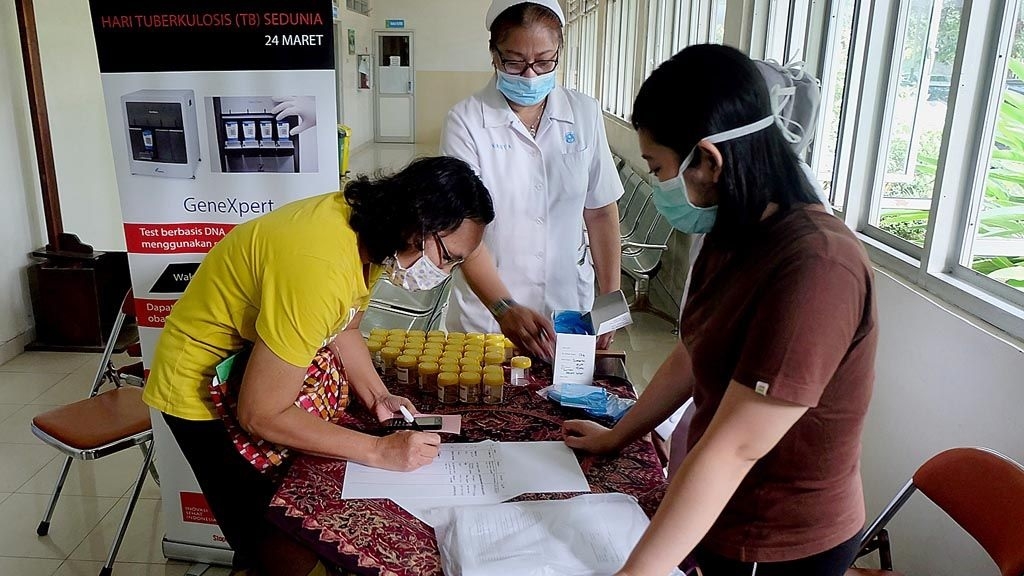Healthcare workers at higher risk of TB than masses: Study
| Date :08-Sep-2024 |

NEW DELHI :
Underlining critical occupation risks in the health sector, a new study has found that cases of tuberculosis are a lot more prevalent among healthcare workers in India in comparison to the general population.
The analysis of 10 separate studies conducted in the last two decades between 2004 and 2023 found an average prevalence of 2,391.6 cases per 1,00,000 healthcare workers in India, far higher than the rate of 300 cases per 1 lakh population. The study, titled ‘Prevalence of Tuberculosis Among Healthcare Workers in India: A Systematic Review and Meta-Analysis’, is a collaborative effort by Dr Ravindra Nath from Teerthanker Mahaveer University, Moradabad, along with Dr Jugal Kishore, Dr Pranav Ish, Dr Aninda Debnath, and Dr Nitin Panwar, from VMMC and Safdarjung Hospital, and Dr Anirban Bhaumik from Dr Babasaheb Ambedkar Medical College and Hospital, Delhi.
Tuberculosis (TB) remains one of the most critical public health challenges globally, particularly in countries with high endemic rates such as India, which alone accounts for approximately one-fourth of the global TB burden, the study said. This infectious disease, caused by Mycobacterium tuberculosis, is predominantly spread through airborne particles, making it a significant occupational hazard, especially in healthcare settings.
The incidence of TB among healthcare workers (HCWs) is alarmingly high, reflecting broader systemic vulnerabilities within healthcare infrastructure.
The frequency of exposure to the pathogen is often compounded by the presence of multidrug-resistant (MDR) and extensively drug-resistant (XDR) TB strains. These strains not only complicate treatment but also highlight the critical need for stringent infection control measures in healthcare facilities.
Studies have indicated that TB incidence rates in HCWs are three times higher than those observed in the general population.
Despite the acknowledged risks, comprehensive epidemiological data on TB among HCWs in India is sparse and often inconsistent, Dr Jugal Kishore, Director and Professor in the Department of Community Medicine at Safdarjung Hospital highlighted. The analysis, which reviewed ten studies conducted between 2004 and 2023, identified particularly high TB prevalence rates among laboratory technicians (6,468.31 cases per 1,00,000), doctors (2,006.18 per 1,00,000), and nurses (2,726.83 per 1,00,000).
This data points to significant occupational hazards that are often overlooked in the healthcare sector, Dr Kishore said. The study’s findings highlighted several factors contributing to the high TB rates among HCWs. These include inadequate ventilation and underlying poor air circulation in healthcare facilities significantly increasing the risk of airborne transmission of TB.
Also, despite the high risks, many HCWs do not consistently use PPE, such as N95 masks, particularly in high-exposure areas, the study pointed out.
HCWs frequently encounter patients with multidrug-resistant (MDR) and extensively drug-resistant (XDR) TB, further complicating their occupational risks.
Given these findings, the authors strongly recommend immediate action to protect HCWs which includes ensuring consistent use of PPE and other infection control measures in all healthcare settings.
They also stressed routine TB screening for all HCWs, especially those in high-risk roles, to facilitate early intervention and reduce transmission besides, holding ongoing training programmes to raise awareness about TB risks and the importance of preventive practices.
They also called for investing in better ventilation systems and dedicated isolation rooms to reduce the spread of TB in healthcare environment and providing access to adequate nutrition, mental health services, and support for managing work-related stress, which is crucial for reducing vulnerability to TB.
The authors have advocated for the development and implementation of national guidelines for routine TB screening and surveillance among HCWs.
These guidelines should focus on high-risk groups such as medical trainees and those working in high-exposure departments. Moreover, there is an urgent need for mandatory infection control training programmes and investment in healthcare infrastructure to create safer work environments.
“As India strives to eliminate TB by 2025, this study serves as a stark reminder that protecting our healthcare workers is essential to achieving this goal. The findings not only highlight the occupational risks faced by HCWs but also call for a collective effort to “Save the Saviours” who dedicate their lives to caring for others,” Dr Kishore said.



